|
|
Advertisement:
|
|
Procase 3688 Mini-ITX Case |
|
Join the community - in the OCAU Forums!
|
Introduction, Features
We recently reviewed VIA's EPIA CL6000E motherboard, a pretty neat mini-ITX motherboard with dual LAN and a fanless 600MHz VIA Eden processor, destined to be my new firewall/router. It was good. Indeed, it was very good. Now it's time to look at a mini-ITX case to put it into.
There are a multitude of mini-ITX cases available these days, but most of them aren't overly small. Allowing room for a full-sized hard disk, a CD drive or two and a power supply inside the case limits how small any conventional case can be, and that in turn limits the advantage able to be gained from small mini-ITX motherboards. I wanted something as small as possible, quiet and stylish.
Enter the Procase 3688, manufactured by Morex. This is a mini-ITX case that is pretty close to as small as it can be while remaining fully functional and practical to use. The Procase 3688 can house any of the VIA EPIA mini-ITX motherboard range (albeit with some minor modification that we'll look at a little later), one slimline optical drive, and one 2.5" (laptop) hard disk. It features an external powerbrick 12V transformer with only a DC/DC power supply inside the case to provide the required voltages and regulation to the motherboard and drives - and it looks pretty cool into the bargain.
Note: the Morex Procase 3688 is also known as the Cubid 3688.
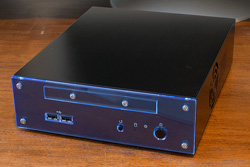
The case has quite an attractive blue tinted acrylic front, with a black top, sides and base. The front of the case sports a pair of USB2-capable ports, a slimline optical drive slot, the standard power and reset buttons, and power and hard disk activity LEDs. The power LED is blue, which goes nicely with the blue acrylic front.
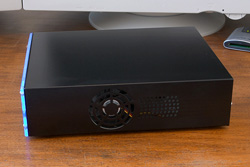
Looking at the right side of the case, we can see the 60mm exhaust fan grill. The fan is located so that it more or less draws air across the heatsinks on the EPIA motherboards and is extremely quiet - practically silent. More on this later.
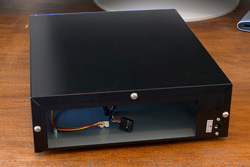
The back of the case is fairly unexciting. The socket for connecting the external power supply is in the bottom right in the photo above, but apart from that the only other feature of note is the gaping hole which the motherboard backplate will later clip into.
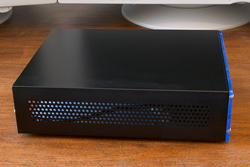
The left side of the case contains venting to act as an intake for the exhaust fan on the other side, and well, not much else.
One thing of note is that the case has no feet at all - the base of the case is completely flat. I guess whether this is an issue or not depends on your intended application, but I would have preferred some feet of some kind be included. I wandered down to my local hardware store and grabbed some self adhesive foam feet, which do the job nicely.
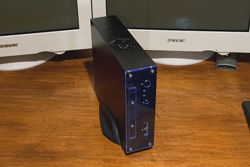
Having said that, the case does come with a plastic stand which can hold the case on its side, if that's your bag. I think it looks rather neat, too.
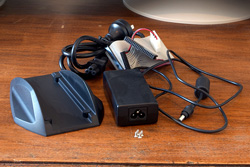
Looking at the accessories supplied with the case, we have the plastic stand, HDD mounting screws, an interesting looking IDE cable and the external powerbrick transformer.
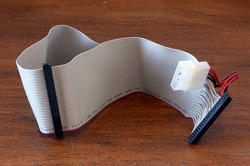
Looking a bit more closely at the supplied IDE cable, one end of the cable has a standard IDE connector, but we can see that the other end has both a smaller laptop IDE connector as well as a molex power connector to supply power to the drive though its single data+power connector.
|
|
Advertisement:
All original content copyright James Rolfe.
All rights reserved. No reproduction allowed without written permission.
Interested in advertising on OCAU? Contact us for info.
|

|


